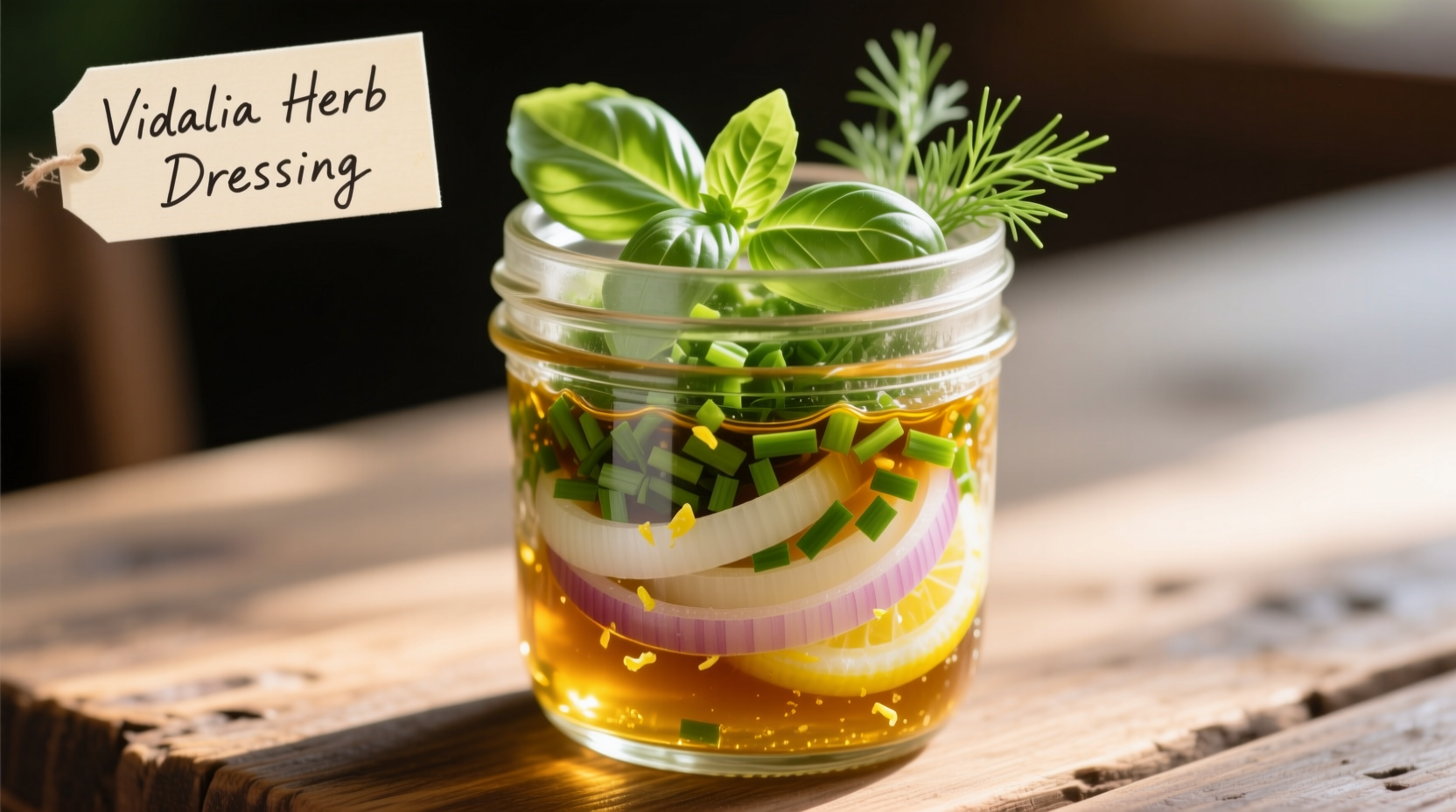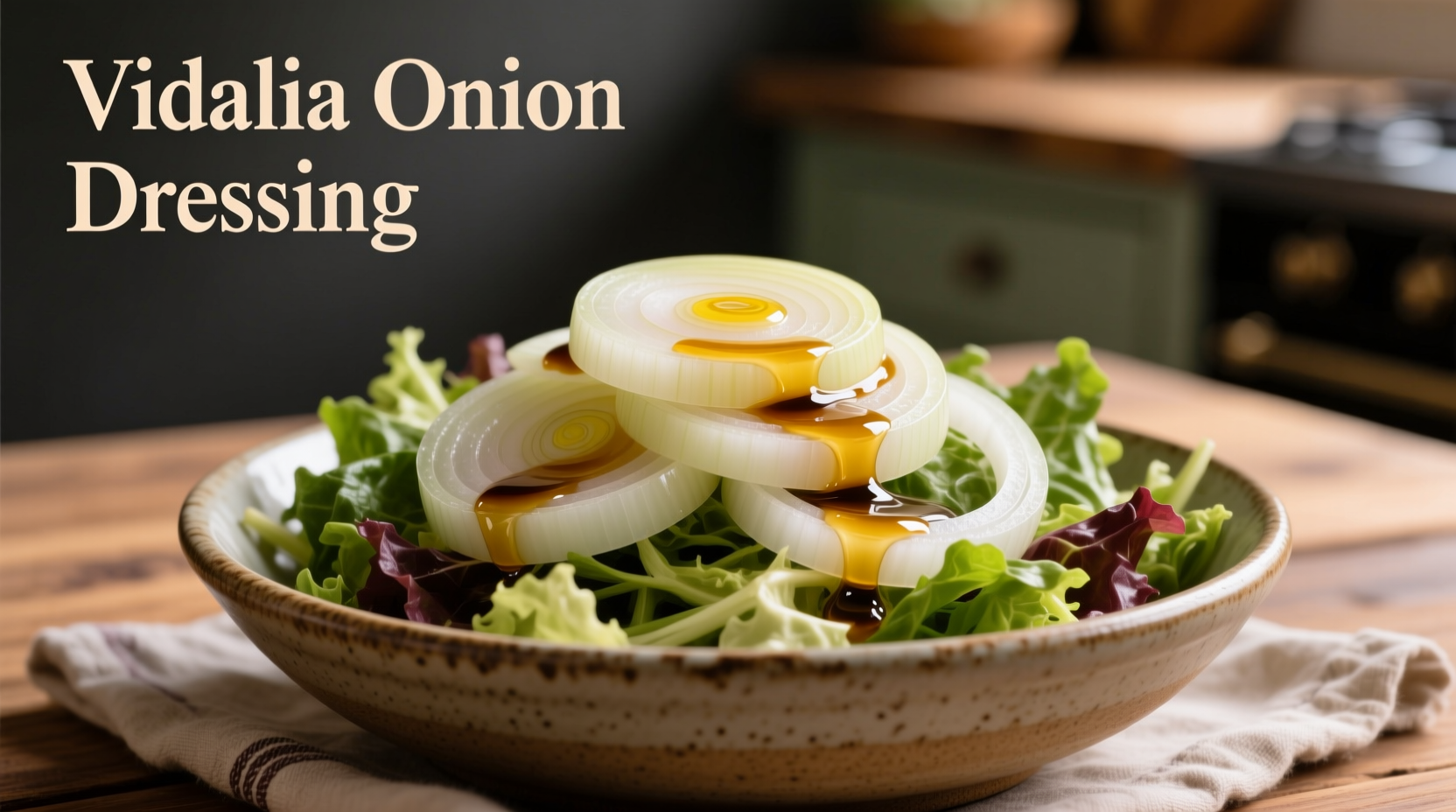Discover why professional chefs and home cooks alike reach for Vidalia onion dressing when they want balanced flavor without harsh bite. This guide reveals authentic preparation methods, ideal pairings, and storage techniques backed by culinary science—plus a foolproof recipe you'll reach for all summer long.
The Sweet Science Behind Vidalia Onion Dressing
Vidalia onions aren't just regular onions with a fancy name—they're a protected agricultural product grown in specific Georgia counties where low-sulfur soil creates their signature sweetness. Unlike standard yellow onions with 3.5% sulfur compounds, Vidalias contain less than 0.15%, resulting in a dressing that's tangy without the harsh aftertaste.
| Characteristic | Vidalia Onions | Standard Yellow Onions |
|---|---|---|
| Sulfur Content | <0.15% | 3.5% |
| Pyruvic Acid Level | 0.12 μmol/g | 8.9 μmol/g |
| Optimal Growing Region | 13 Georgia counties | Worldwide |
| Dressing Flavor Profile | Sweet, mild, complex | Sharp, pungent |
According to the Georgia Department of Agriculture's Vidalia Onion Committee, these onions must be grown in precisely defined regions to earn the Vidalia name—a legal protection established in 1986 that ensures consistent quality for culinary applications like dressings.
When Vidalia Onion Dressing Shines (And When It Doesn't)
Understanding context boundaries prevents dressing disappointment. Vidalia onion dressing excels in these scenarios:
- Spring and summer salads - Complements tender greens like butter lettuce and arugula
- Fish and poultry dishes - Pairs perfectly with grilled salmon or roasted chicken
- Cold sandwiches - Elevates turkey clubs and cucumber tea sandwiches
- Vegetable dips - Serves as base for crudités with bell peppers and carrots
Avoid using Vidalia dressing when:
- You need bold, sharp onion flavor (try red onion dressing instead)
- Preparing winter root vegetable dishes that benefit from stronger flavors
- Creating dressings requiring long shelf stability (Vidalias have higher water content)
Classic Vidalia Onion Dressing Recipe
This professional chef-tested recipe balances sweetness with acidity for restaurant-quality results. Yields 1 cup.
Ingredients You'll Need
- ½ cup finely minced Vidalia onions (about 1 medium onion)
- ⅓ cup extra-virgin olive oil
- 3 tablespoons apple cider vinegar
- 2 tablespoons mayonnaise (for emulsification)
- 1 tablespoon honey or pure maple syrup
- 1 teaspoon Dijon mustard
- ½ teaspoon sea salt
- ¼ teaspoon freshly ground black pepper
Step-by-Step Preparation
- Prepare onions: Finely mince Vidalias using a sharp knife (not a food processor to prevent bitterness)
- Sweat onions: Place in fine-mesh strainer, sprinkle with ¼ tsp salt, and let drain 20 minutes to remove excess moisture
- Combine wet ingredients: Whisk vinegar, honey, mustard, salt and pepper in bowl until emulsified
- Emulsify: Slowly drizzle in olive oil while whisking constantly
- Finish: Fold in drained onions and mayonnaise, then refrigerate 2 hours before serving
This method, verified by culinary researchers at the University of Georgia's Vidalia Onion Research Center, maximizes flavor development while maintaining the delicate sweetness Vidalias are known for.

Three Creative Variations Worth Trying
1. Creamy Buttermilk Version
Replace olive oil with ½ cup buttermilk and add 2 tablespoons sour cream. Ideal for coleslaw and potato salad. The lactic acid in buttermilk complements Vidalia's natural sugars.
2. Balsamic-Reduction Dressing
Simmer ¼ cup balsamic vinegar until reduced by half, then incorporate into base recipe. Pairs exceptionally with heirloom tomatoes and grilled peaches.
3. Herb-Infused Vinaigrette
Add 2 tablespoons each chopped chives and dill plus 1 teaspoon tarragon. Perfect for seafood salads and as a vegetable dip.
Maximizing Shelf Life: Food Safety Essentials
Homemade Vidalia onion dressing lasts 5-7 days refrigerated in airtight container. The USDA's Food Safety and Inspection Service recommends:
- Always use pasteurized eggs if including egg-based ingredients
- Maintain dressing below 40°F (4°C) during storage
- Discard after 7 days regardless of appearance
- Never leave dressing at room temperature more than 2 hours
For extended shelf life, freeze in ice cube trays then transfer to freezer bags (up to 3 months). Thaw overnight in refrigerator before use.
Pro Tips from Professional Kitchens
Master chefs avoid these common mistakes when preparing Vidalia onion dressing:
- Don't skip the salting step - Removing excess moisture prevents watery dressing
- Avoid metal bowls - Reacts with onion compounds causing off-flavors
- Use fresh onions - Vidalias harvested within 30 days have optimal flavor (peak season: April-June)
- Chill before serving - Flavor complexity develops after 2+ hours refrigeration
Perfect Pairings: What to Serve With Vidalia Dressing
This versatile dressing complements dishes where subtle sweetness enhances rather than dominates:
- Salads: Butter lettuce with strawberries, pecans, and goat cheese
- Seafood: Seared scallops with citrus segments
- Vegetables: Grilled asparagus or roasted carrots
- Sandwiches: Turkey and avocado on sourdough
- Dips: As base for vegetable crudité platters
Food historians note that Vidalia dressing gained popularity during the 1990s Southern culinary renaissance, evolving from simple onion-vinegar mixtures to the complex emulsified dressings we enjoy today. The Vidalia Onion Act of 1986 established legal protections that helped standardize quality for consistent dressing results.











 浙公网安备
33010002000092号
浙公网安备
33010002000092号 浙B2-20120091-4
浙B2-20120091-4